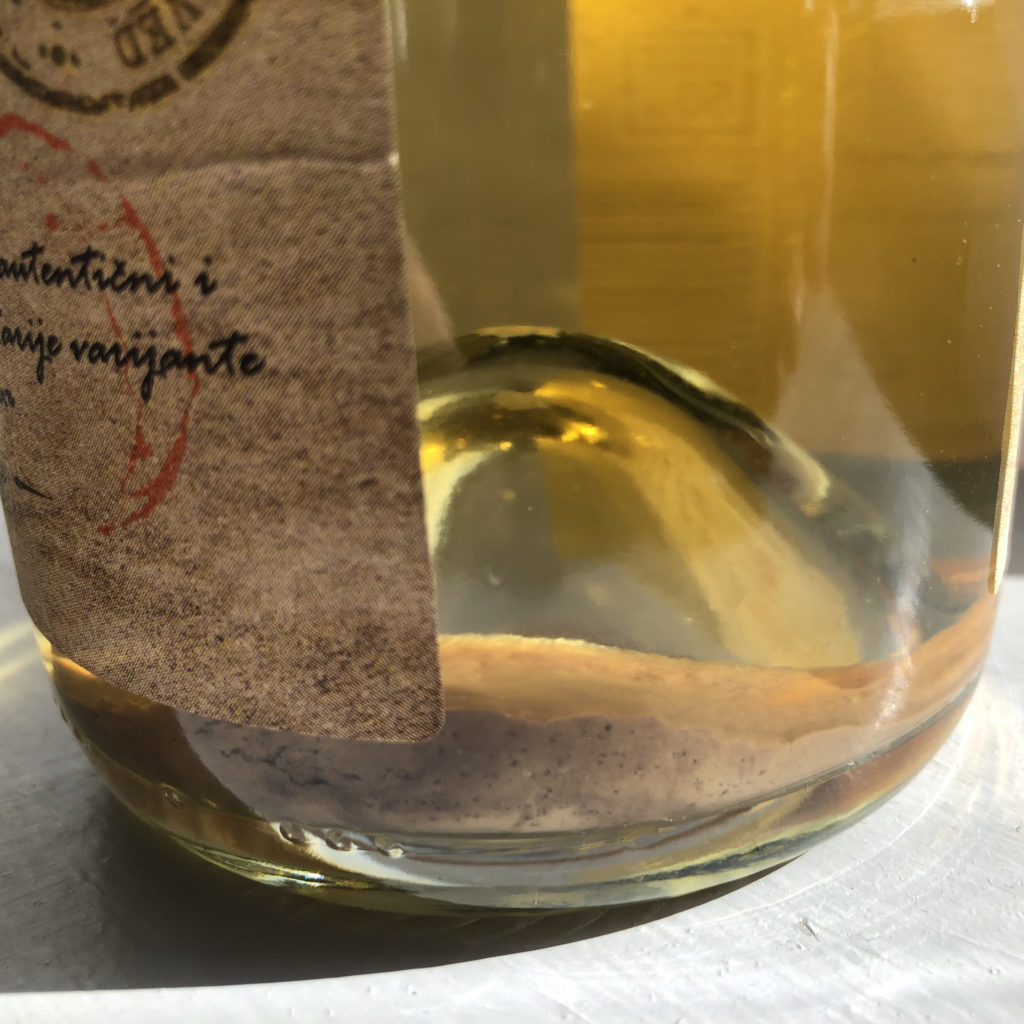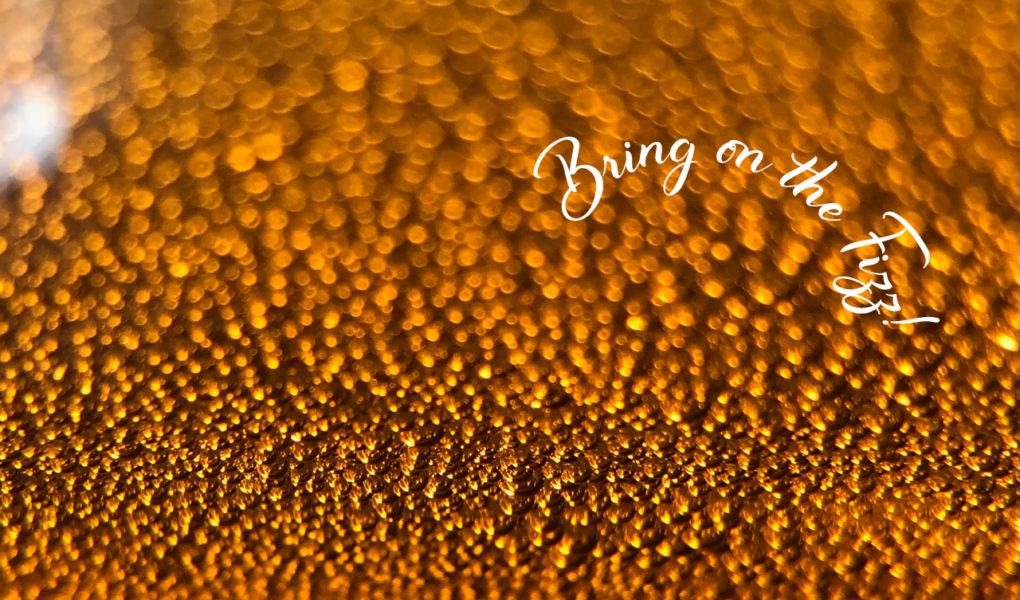Prosecco. Cava. Champagne. All are familiar names of sparkling wine. But none of these is made in Croatia, and finding a decent bottle here can be devilishly difficult.
In the past few years, Croatian wine makers have noticed this gap and filled it with superb bubbly offerings of their own, made in a variety of ways, at a variety of prices.
Now that you know Croatia makes sparkling wine, the only problem is choosing between all the options! Here’s how.
Choose by winemaking method
Traditional method This is the way Champagne is made, and is considered the best-quality process. It is time consuming—legally the wine must age in the bottle for a certain number of months before it can be released for sale. In Croatia this is 9 months, but most wine makers go way beyond, aging the wines for 24 to 48 months. And of course, if a wine maker is going to spend two to four years aging a wine, only the most carefully coddled grapes will be used to make it.
The main difference in making traditional method wine is where the bubble-making happens. In this case, the bubbles in each individual bottle are made inside that bottle. Essentially, the bubbles were custom made just for you.
First, the wine maker makes a fairly normal white or rosé wine. Then he or she puts this base wine into the final sparkling wine bottle, adds a mixture of sugar and yeast, and caps the bottle with a crown cap (beer cap). The sugar and yeast start a fermentation inside the sealed bottle, which creates the carbon dioxide bubbles in the sparkling wine. After the desired time aging in the bottle, the yeasts are removed and the familiar mushroom cork and cage are used to reseal the bottle for sale.
Croatian sparkling wines made by the traditional method will have, on the front or back label, the words Méthode Traditionelle (in French), Tradicionalna Metoda (in Croatian) or alternatively Klasične Methode or Metoda vrenja u boci.
[For more on how to decipher Croatian wine labels, read this.]
Pro If you like the tangy, rich toast or brioche flavors of lees, this is the wine style for you!
Con Time, space and quality grapes amount to money spent. A traditional method sparkling wine is the priciest kind—although the prices of Croatian bottles are far below those of Champagne.
What are lees?
Lees are the yeast cells left after fermentation. They add flavor and a richer texture if they are left in contact with the wine. After about a year, the yeast cells start to break down in a process called autolysis, which creates complex flavors usually described as brioche, toasty or nutty. It is up to the wine maker to decide how much “lees contact,” if any, a wine will have. A non-sparkling wine that has been enriched through lees contact will sometimes be labeled “sur lie.”

Sparkling wine lovers will recognize the rich, yeasty flavor of lees. Because traditional method wines are fermented in the bottle, the wine is in contact with the yeast cells for the entire term of aging—most often two to four years.
If you love lees, go for traditional method wines, or ancestral method wines where you can see the lees sitting at the bottom of the bottle. Many ancestral method haven’t been filtered, so you can gently mix the lees in, if you want, before you open the bottle. Because these wines are young and autolysis has not yet begun, the lees will taste fresher than in traditional method wines.
If you are not a fan of lees, or want an easy, fresh-and-fruity tasting wine, you can experiment among traditional method wines to find types with less lees flavor. Or, stick with tank method wines, which spend much less time on the lees.
Charmat or tank method The tank method of making sparkling wine uses the same basic principles as traditional method (base wine + sugar and yeast = bubbles). But there’s one major difference. In this case, the bubbles are not created inside each individual bottle.
The base wine is kept in a large winery tank, where the wine maker adds the sugar-and-yeast mixture. The tank is sealed under pressure, and the bubbles are created inside the tank. After a little aging, the wine is bottled under pressure, so the bubbles can’t escape.
Economy is the benefit of the tank method. Whenever an individual process can be done in bulk, it saves money. But it’s not about cutting corners—some very good quality wines are made this way. These wines are given less time on the lees, so the flavor of the grape variety shines through. Compared to traditional method wines, they seem fresher, fruitier and lighter.
Medea winery, in southern Istria, chooses to make its sparkling Malvazija with the tank method. Wine maker Marko Krstačić explains, “I wanted to make Malvazija, but to be very fresh, very fruity . . . to represent sparkling Malvazija in its best form.”
He knew he didn’t want a lot of lees flavor or lengthy aging. It would be a tank method wine. Not only that, but he is one of a handful of wine makers who leave the tank method to the experts—the wineries in northern Italy that use this process to make their own wine: Prosecco.
Medea makes the base wine from their own grapes, then ships the wine a few hours north for the second, bubble-making fermentation and bottling. The result is fresh and aromatic—and very friendly at about 60 kuna (8 euros).
Tank method wines may mention “tank” or “Charmat” on the back label, but most wineries won’t go out of their way to state this. The best indication of a tank method wine is that the words “traditional method” are missing from the label.
Pro Price! If you’re loafing on a boat or your terrace all day—or mixing up some spritzes—you don’t necessarily need a complex wine. If easy and festive is what you want, here’s your solution.
Con It’s easy to make cheap wine in this category by cutting corners. And the cheapest are likely not to be tank method at all, but simply injected with bubbles like soda. If it’s too cheap to be true, buyer beware!
Ancestral method This style of wine has been all the rage in Croatia recently, with more and more wineries making it. The wine is generally referred to by the French name, pétillant naturel, conveniently shortened to pet-nat.
It is quite simple to make ancestral method wines. The main difference here is that there is only one fermentation. Instead of fermenting to make a base wine and then fermenting again to make the bubbles, the bubbles from the first fermentation are trapped.
The fermentation is often done in a tank, but sometimes inside each bottle. Much depends on whether the wine maker wants cloudy yeasts inside the bottle (considered extra-tasty by some, mucky and weird by others).
In terms of flavor, these wines are fresh and simple. You can taste the grapes more. Because there is only one fermentation, the wines have lower alcohol and a softer bubble (pétillant versus fully sparkling) than the two other types of sparkling wine above.
The presence of yeast sediment in the bottle can add some complexity, but overall these are meant to be casual picnic wines. To spot them, look for the crown cap (beer cap) on top.
Pro Pet-nat wines require no aging, so they are usually released in spring—exactly when you first want a light, fresh bubbly! They’re like a “sparkling nouveau.”
Cons So far these are made in small quantities in Croatia, which means they become harder and harder to find after late spring. And one tip to keep in mind: these wines are unstable, especially those with lees in the bottle. Open the bottle outside or over the sink, unless you want to clean up a sticky explosion!
Choose by price
Price is directly related to winemaking method. A wine aged in the bottle for two years will always be more expensive than one that is aged for a few months in tanks. You’re paying for time, caretaking, and the extra flavor and complexity that result from a longer aging time. Grape quality comes into play as well, with higher quality fruit used for more expensive wines.
For descriptions of each type of wine referred to here, see “Choose by winemaking method,” above.
Over 100 kuna/13.50 euros Traditional method wines are the most expensive category, but you can easily have a great one for 120 to 150 kuna (16 to 20 euros).
Under 100 kuna/13.50 euros Sometimes you just want some basic bubbles. Whether for quaffing or fizzy cocktails, tank method wines are the least expensive, running about 50 to 80 kuna (6.70 to 10.70 euros).
About 100 kuna/13.50 euros In the middle are ancestral method wines (aka pet-nat). This is a trendy style of wine that is made by some of the more forward-thinking wineries that aren’t afraid to experiment. Sure it’s a less time-consuming way to make fizz, but if these grapes weren’t used for pet-nat, they would go into the winery’s regular wines. The pet-nat is priced accordingly.
Choose by region
Croatian sparkling wines are increasingly made all over the country, as wine makers become more adventurous and attempt to fill all available market niches. But here is where knowing your Croatian grapes comes in handy—because choosing by region is basically choosing by grape.
[For more about Croatian grape varieties, read here.]
Sparkling wine can be made with virtually any grape variety, although some are better than others. Arguably the best varieties are the ones used to make Champagne: mainly Pinot Noir and Chardonnay.
These varieties do grow in Croatia, especially in the cooler Uplands region. But many wineries choose to spotlight a regional or native variety instead. A few examples are mentioned below, but the whole country is ripe for exploration!
Uplands This region around Zagreb is the original hotspot for traditional method wine in Croatia, especially in the hilly Plešivica region, near Jastrebarsko. Here, you’ll find traditional method wines in every color and style, primarily from Pinot Noir and Chardonnay, as well as an increasing number of pet-nats.
The best-known names in Plešivica include Griffin, Kolarić, Korak, Šember, Tomac and others. Many other sparkling wines are made in the surrounding region, such as those from Bolfan and Kota.
Istria and Kvarner Sparkling wines here may be made from Pinot Noir and Chardonnay, but many of them feature the region’s own Malvazija variety instead, or as part of the blend.
For traditional method wines with abundant time on the lees, Misal’s mostly Malvazija-based wines can’t be beat. For easy seaside fizz, Katunar, on the island of Krk, makes an excellent tank method wine called Biser Mora, from the local Žlahtina grape.
Dalmatia It can be difficult to grow ideal grapes for sparkling wine in a hot climate, but certain lighter local varieties work beautifully.
Examples are Bogdanuša (try the tank method wine called Danica from Carić, on Hvar) or Plavina (there’s a traditional method rosé called Perla from Degarra, near Zadar). Madirazza, on the Pelješac peninsula, makes some excellent pet-nats.
Slavonia and the Danube These regions have been slower to make sparkling wine. They are perhaps best known for cheap, basic-quality bubbles from some of the biggest wineries. Try Feravino’s rosé from Frankovka (aka Blaufränkisch) and Kutjevo winery’s traditional method Graševina called Maximo.
[Title image: Staff/CCM]
This article was originally published as a guest contribution to Expat in Croatia–all you need to live and travel like a local in Croatia.


Do any Croatian sparkling makers produce an alcohol removed sparkling for people who cannot have alcohol ? Where can this sparkling be purchased?
Hi Rosemary, I have not yet encountered any no-alcohol wines (sparkling or otherwise) in Croatia. I will ask around, but Croatia is often a bit behind the rest of the wine world…